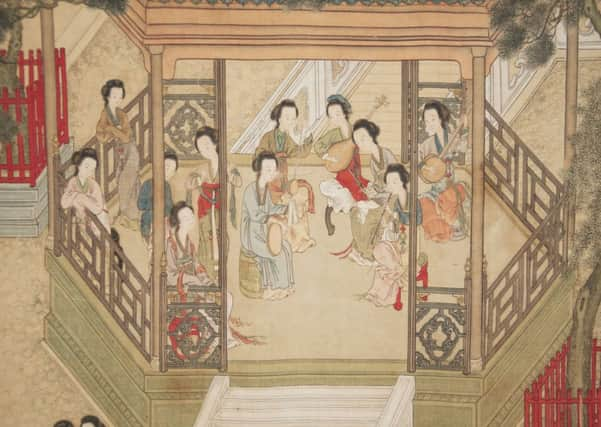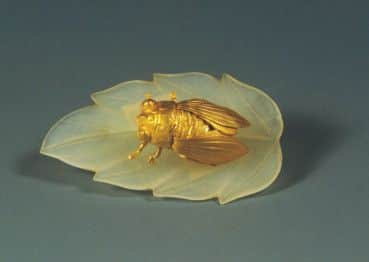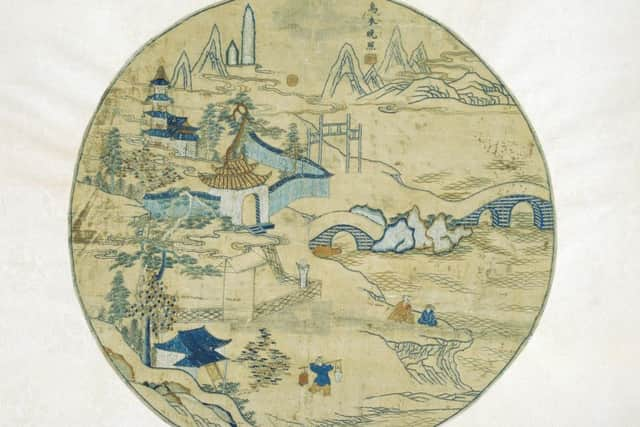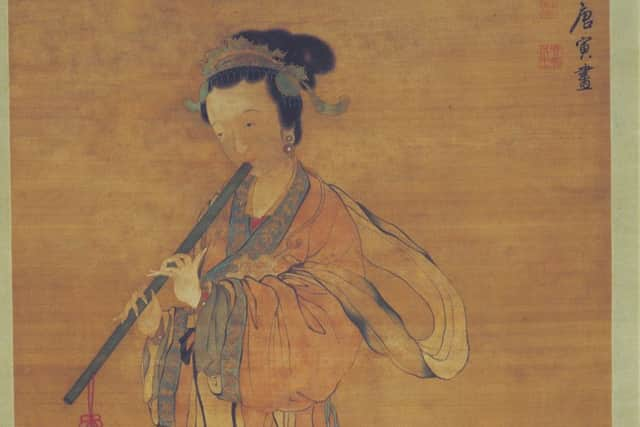Ming Dynasty’s treasures come to Scotland


A Ming vase. It’s become shorthand for something to be treasured, something precious and rare. We know what we’d do if we found one in the attic, but what do we actually know about the Ming? Who were the people responsible for China’s most famous luxury export? This summer, an exhibition at the National Museum of Scotland displays the objects and images they left behind and provides some of the answers.
“Everyone has heard of a Ming vase, it’s become a trope, but with the exhibition we delve into Ming society and try to give an understanding of that culture,” says Dr Kevin McLoughlin, Principal Curator, Central and East Asia at National Museums Scotland.
Advertisement
Hide AdComprising 120 pieces on loan from Nanjing Museum in China, with 30 from the NMS’s own collection, Ming: The Golden Empire shines a light on the brilliance of a rule that lasted 276 years. From 1368-1644, the Ming Dynasty and the 16 emperors who ruled it saw the social, cultural and economic transformation of China into what was at the time the world’s only global superpower. As the economy flourished, so did the arts and Ming – meaning great brightness – became synonymous with culture, learning and progress. When the Forbidden City was built in 1420, it became the imperial seat for the next five centuries, the epicentre of a thriving cultural and consumer society that laid the foundations of the China we know today.


“Until it fell in 1644, the Ming was the world’s largest, wealthiest, most cultured, and most populous empire,” says McLoughlin. “We have divided the exhibition into themes to give a contextual framework to the pieces and show people why the Ming was important, what objects they used, how they used them and why they valued them. They can learn about Ming culture and history by looking at their literature and art, their ceramics, lacquerware and painting.”
To help us understand the hows and the whys of the Ming, the exhibition is divided into five themes – imperial rule and how it functioned; belief systems including Confucianism, Daoism and Buddhism; the Ming elite; the economy; and the end of Ming rule.
Rare objects on display include iconic Ming blue and white porcelain, silks, gold, embroidery – including examples from the renowned Gu family of female embroiderers from Shanghai – jade and enamelled cloisonné. There is an exquisite gold cicada on a jade leaf ornament, excavated from a tomb in 1954, and portraits of the educated elite, or Literati.
“This was a formative period in China, and also when Europe first began to learn about it,” says McLoughlin. “It was an age of expansion, of profound economic change, sustainability, self-sufficiency and sophistication. In many ways it also represents the starting point of modern China. And one of the interesting things about Ming is that it’s the last native Chinese dynasty – the following Qing dynasty were semi-nomadic, from north-east of China in Manchu, and didn’t speak Chinese, weren’t educated in Chinese culture.”


Up until about 1600 China was ahead of Europe in terms of culture, education and technology and when the Roman Catholic Jesuits, who were the first to visit, arrived on its shores they were amazed by the huge libraries and literate society they found. When Europe began to catch up in the 17th and 18th centuries and become more industrialised, China, with its vast manpower, had no need to follow suit: there was little it needed from Europe.
Advertisement
Hide AdUnder the stability of the Ming rulers, the Chinese population exploded from 60 million in the 1300s to 130-170m in 1644, and an expanding, educated and cultured middle class could buy anything it wanted. Porcelain was particularly prized and using the skills developed for the imperial court in the Forbidden City, production began on an industrial scale to meet the demands of the domestic market.
If the self-sufficient Chinese didn’t need anything from Europe, the same could not be said for Europeans, who were desperate to get their hands on their porcelain, the manufacture of which only the Chinese had mastered. While the Chinese were sipping tea from delicate cups, Europeans were making do with stoneware and earthenware. It was the Jesuits, with their impressive calligraphy, and cartography, who took the first steps into the closed world of China, and when silver was discovered in Mexico and Peru, trade with the West began through the East India Company. Porcelain, at first used as ballast on the tea and silk ships, began making its way to Europe and products began to be adapted for the European market. Soon butter dishes and tankards were sent from China on the ships of the Dutch East India Company, which was set up in 1601. It was another 100 years before Europeans discovered how to make porcelain themselves with Meissen in Germany, the Chinese never having divulged the secret.
Advertisement
Hide Ad“Chinese porcelain was valued, it was the new aesthetic, there was nothing like this in Europe. It was luminous, attractive, didn’t stain, didn’t taste of last night’s dinner. By the 1630s the European middle class were able to afford Chinese ceramics and wooden forms were sent out to be copied and sent back,” says McLoughlin.


“A lot of the ideas we have about Chinese painting and decorative arts took off during the Ming, because of commercialisation,” says McLoughlin. “Blue and white porcelain became influential all over the world, first in Persia, then into Europe, Japan and North America. Its influence can be seen in Delft and Spode, who copied it and during the golden age of Dutch painting, from 1600-1640, you see Chinese porcelain in paintings of interiors.”
“There is some very fine porcelain in the exhibition, some of which was produced for imperial usage, in distinctive Ming blue and white. There is also some prestigious Literati painting, textiles and embroidery,” says McLoughlin.
The Literati was the cultural and social elite of the Ming period, a sector of society that burgeoned because education and passing the gruelling, all-important civil service exams, which were based on Confucian classics, were hugely important. It could take up to the age of 80 to pass all of these, but if you did your family were set up with government jobs for life, while those who didn’t make it to the very top pursued artistic and literary careers instead. All of this produced a large Literati class whose tastes the lower orders imitated, and the Ming style was consolidated.
“These objects give us a tangible connection with Ming. You need to know what you’re looking at and why you’re looking at it,” says McLoughlin. “How it was used and where it was used. When you look at them you see a level of detail you won’t see in books or online. We are seeing the authentic object, it’s five or six centuries old, and it gives a real understanding of Ming and Chinese culture. You learn from seeing the real thing.”
• Ming: The Golden Empire, 27 June-19 October, National Museum of Scotland, Chambers Street, Edinburgh, adults, £10, concessions, £8, children (12-15, under-12s free) £6.50; www.nms.ac.uk